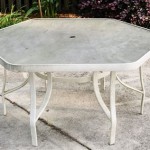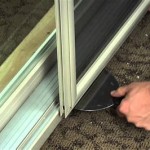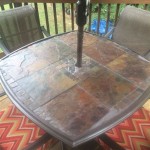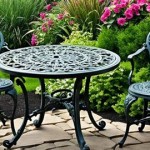The Enduring Appeal of Chinese Patio Furniture
Chinese patio furniture represents a distinctive category within the broader landscape of outdoor furnishings. Its aesthetic roots are deeply embedded in centuries of Chinese art, philosophy, and craftsmanship. Unlike mass-produced, globally homogenized patio sets, Chinese designs often incorporate unique materials, construction techniques, and symbolic motifs that evoke a sense of history and cultural heritage. The following article will delve into the characteristics, materials, and historical context that define Chinese patio furniture, exploring the key features that contribute to its enduring appeal.
Materials and Craftsmanship
The selection of materials and the application of traditional craftsmanship are fundamental to the character of Chinese patio furniture. While modern adaptations may incorporate synthetic elements for durability and weather resistance, authentic and high-quality pieces prioritize natural materials that have been used in Chinese furniture making for generations.
Hardwoods are frequently used as core building materials. Teak, due to its inherent resistance to decay and insects, is a particularly prized wood in outdoor settings. Rosewood, renowned for its rich color and density, is often employed in more ornamental or high-end pieces. Bamboo, a rapidly renewable resource, is another common building material. Its strength and flexibility lend themselves to intricate designs and provide a visually striking aesthetic. Other hardwoods such as elm, known for its durability and attractive grain, and camphorwood, valued for its natural insect-repelling properties, are also used depending on the region and intended use of the furniture.
Traditional joinery techniques, often passed down through generations of artisans, are another hallmark of quality Chinese furniture. Mortise-and-tenon joints, dovetail joints, and other intricate interlocking methods minimize the need for nails or screws, creating stronger and more durable structures. These techniques are not merely functional; they are also an integral part of the design aesthetic, showcasing the skill and precision of the craftsman.
The application of finishes further enhances the beauty and longevity of the furniture. Traditional lacquer finishes, derived from the sap of the lacquer tree, provide a protective coating that is resistant to moisture, scratches, and UV damage. These finishes can range from clear coats that highlight the natural wood grain to opaque colors that add a decorative touch. Hand-rubbed oil finishes are also common, offering a more natural look and feel while still providing a degree of protection. The importance of using appropriate finishes is crucial to ensuring the longevity of the furniture when exposed to the elements.
Beyond the structural components, Chinese patio furniture often incorporates decorative elements that reflect the rich artistic traditions of the culture. Carvings, inlays, and painted motifs can adorn surfaces, adding visual interest and symbolic meaning. Common motifs include dragons, phoenixes, flowers, and landscapes, each carrying its own cultural significance. The level of detail and intricacy in these decorative elements can vary widely, from simple geometric patterns to elaborate scenes that tell a story. These artistic touches elevate the furniture from mere functional objects to works of art that enhance the beauty of outdoor spaces.
Design Principles and Aesthetics
The design principles that govern Chinese patio furniture are deeply rooted in traditional Chinese philosophy and aesthetics. Simplicity, balance, and harmony are key considerations, reflecting the principles of Feng Shui and the Taoist concept of living in harmony with nature. These principles translate into furniture designs that are both visually pleasing and functionally comfortable.
The concept of balance is evident in the proportions and symmetry of many pieces. Chairs and tables are often designed with clean lines and balanced weight distribution, creating a sense of stability and composure. The arrangement of elements within a piece, such as the placement of legs, arms, and backrests, is carefully considered to achieve visual harmony.
Simplicity, another guiding principle, does not equate to a lack of detail. Rather, it emphasizes the importance of restraint and avoiding unnecessary ornamentation. The focus is on highlighting the natural beauty of the materials and the elegance of the form. Intricate details are often incorporated subtly, adding visual interest without overwhelming the overall design. This allows the furniture to blend seamlessly into its surroundings, creating a sense of tranquility and calm.
The connection to nature is a recurring theme in Chinese furniture design. Natural materials, such as wood and bamboo, are often left unadorned to showcase their inherent beauty. Motifs inspired by nature, such as flowers, plants, and animals, are frequently incorporated into carvings and paintings. The colors used in finishes and upholstery often reflect the colors found in nature, such as greens, browns, and blues. The overall effect is to create a sense of connection between the furniture and the natural environment.
Seating arrangements often prioritize open spaces and views. Furniture is typically arranged to encourage interaction and conversation, while also allowing individuals to appreciate the surrounding landscape. Low tables and stools are common, promoting a relaxed and informal atmosphere. The placement of furniture is often guided by the principles of Feng Shui, with elements arranged to optimize the flow of energy and create a harmonious environment.
The shapes of the furniture pieces are often inspired by traditional Chinese architecture and art. Curved lines, flowing forms, and geometric patterns are common. The use of negative space is also important, creating a sense of lightness and airiness. This overall design approach contributes to the elegance and sophistication of Chinese patio furniture.
Historical Context and Cultural Significance
Understanding the historical context of Chinese patio furniture provides valuable insight into its design and cultural significance. Furniture making in China has a long and rich history, dating back thousands of years. Over time, different dynasties and cultural influences have shaped the evolution of furniture design. The patio furniture styles seen today often draw inspiration from these historical precedents.
During the Ming Dynasty (1368-1644), Chinese furniture reached a peak of refinement and elegance. Ming furniture is characterized by its simple lines, graceful curves, and meticulous craftsmanship. Pieces from this era often feature exquisite joinery and intricate carvings. The materials used were typically high-quality hardwoods, such as rosewood and ebony. Ming furniture served as a benchmark for subsequent generations of furniture makers, influencing design aesthetics for centuries to come. Examples of Ming Dynasty characteristics can be found in contemporary designs, with subtle curves and clean lines being particularly prevalent.
The Qing Dynasty (1644-1912) brought about a shift in style, with a greater emphasis on ornamentation and opulence. Qing furniture often features elaborate carvings, inlays, and painted motifs. The use of color became more prominent, with bright reds, greens, and golds frequently employed. While the overall aesthetic was more ornate than Ming furniture, the craftsmanship remained of a high standard. The Qing Dynasty aesthetic can be seen in modern, more decorative pieces, where ornate carvings and bold colors add visual interest and a sense of historical grandeur.
The influence of Western design styles began to emerge in China during the late 19th and early 20th centuries. European and American furniture designs were introduced, leading to a blending of Eastern and Western aesthetics. This fusion resulted in a unique style of furniture that incorporated elements from both cultures. Contemporary adaptations of Chinese patio furniture sometimes reflect this East-meets-West influence, incorporating elements of Western design while retaining core Chinese aesthetic principles.
Beyond its aesthetic qualities, Chinese patio furniture also carries significant cultural meaning. Certain motifs and symbols are associated with specific concepts or beliefs. For example, dragons symbolize power and good fortune, while phoenixes represent rebirth and immortality. Flowers, such as the peony and the lotus, are associated with beauty and purity. The use of these symbols adds layers of meaning to the furniture, making it more than just a functional object. It provides an opportunity to connect with Chinese culture and history.
Today, Chinese patio furniture continues to evolve, blending traditional techniques with modern design sensibilities. While many mass-produced imitations exist, authentic and high-quality pieces remain highly sought after for their beauty, durability, and cultural significance. The enduring appeal of Chinese patio furniture lies in its ability to evoke a sense of history, harmony, and connection to nature, transforming outdoor spaces into tranquil and aesthetically pleasing environments.

Top 10 Outdoor Furniture Manufacturers In China Foshan Sourcing 2024

Why Are Chinese Outdoor Patio Furniture Increasingly Popular In Recent Years Interi

Top Six Best Outdoor Furniture Manufacturers In China Morefar Global

Why Are Chinese Outdoor Patio Furniture Increasingly Popular In Recent Years Interi

Patio Dining Outdoor Leisure Table And Chair Set Modern Chinese Garden Furniture China Rattan Sofa Made In Com

Restaurant Metal Hanse Carton Standard Ng Foshan Chinese Patio Furniture China Outdoor Made In Com

Top 10 Outdoor Furniture Manufacturers In China Foshan Sourcing 2024

Commerial Modern Outdoor Exterior Garden Home Deck Hotel Balcony Patio Rattan Wicker Sofa Furniture China Made In Com

Why Are Chinese Outdoor Patio Furniture Increasingly Popular In Recent Years Interi

Chinese Sourcing Company Strategic Business Partner In China Yiwu Bazaar
Related Posts








